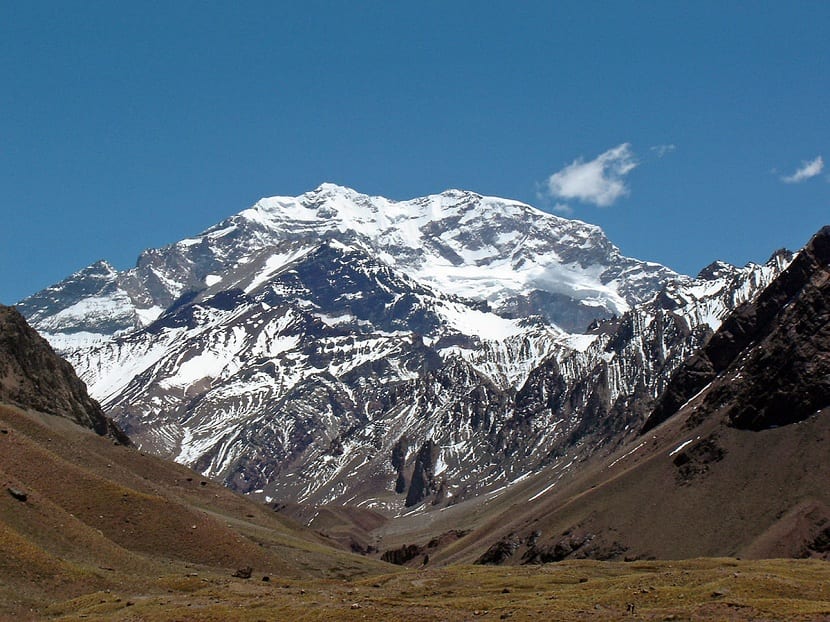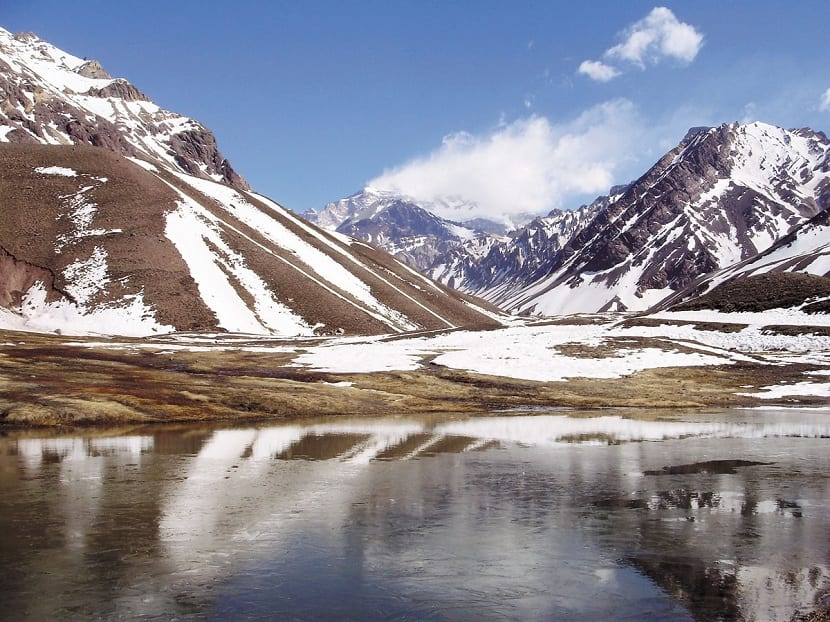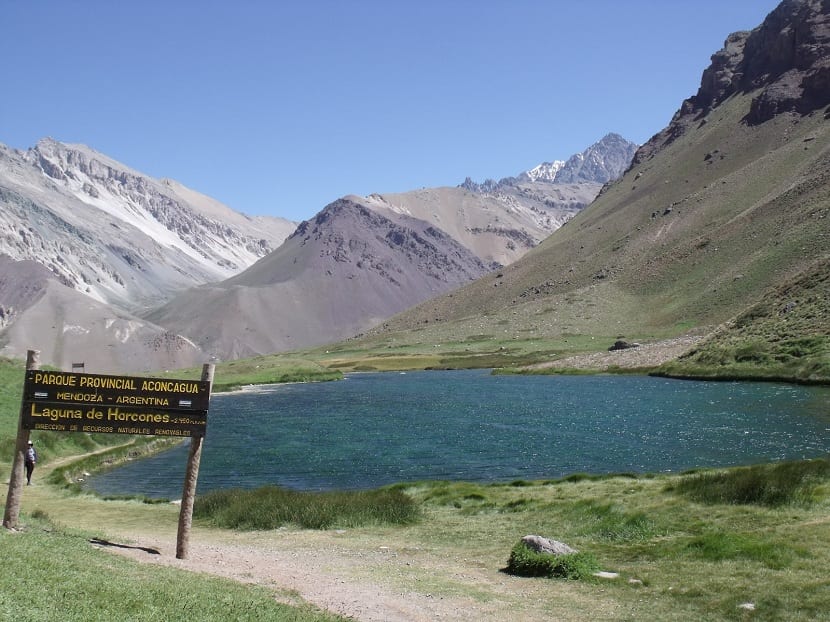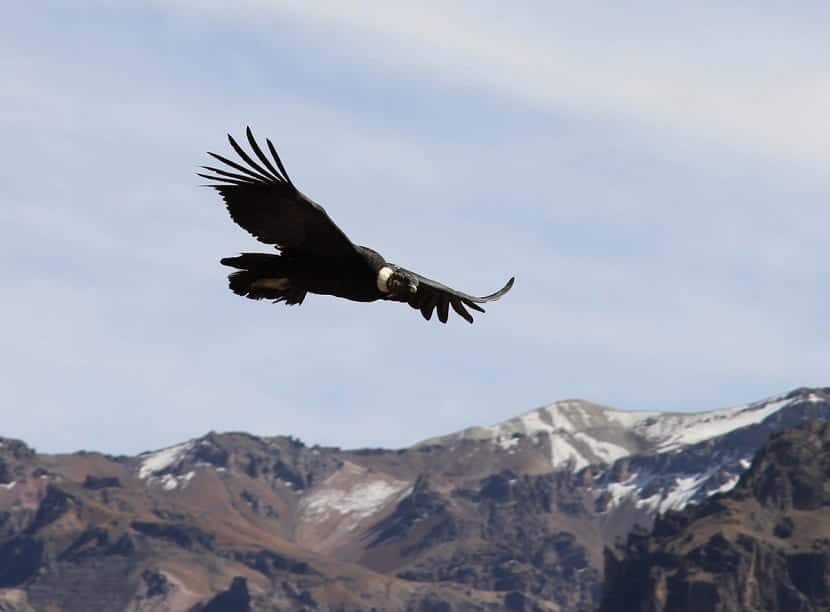
Among the most important mountains in the world is the Aconcagua. It is also known by the name of Cerro Aconcagua. It is a mountain that is located in the western province of Mendoza, in the center-west of Argentina. It marks the border with Chile and is the highest point found in the entire western part of the planet. Being such an important mountain, people have it within the classification of the Seven Summits where it is found, for example, the Himalayas.
In this article we are going to tell you about all the characteristics of this famous mountain and reveal some of its most interesting secrets.
Key features

We are talking about one of the mountainous elevations based on the high relief that is most important on the planet. These mountains they have the highest altitude of the entire American continent. It is located in the territory of Argentina. Within the mountainous system of the Andes, Aconcagua is the one with the highest elevation. It has two peaks that are located in the south zone and the north zone. These two summits make a spectacular hiking route since they are connected by a ridge known as the Filo de Guanaco.
At the top we find a multitude of glaciers that are there all year round. These glaciers are the ones that shape the landscape so that it has this majesty over the thousands of years of freezing and thawing cycles.
Aconcagua has a volcanic origin, although it is not a volcano. If so, it could not have glaciers due to the heat given off by the volcano's chimney. The vast majority of rocks in the area of the peaks are volcanic. One of its main characteristics is that the mountains that form it are very young. These mountains have high elevations on the peaks. The lowest elevation level is 2500 meters, so we can figure out the rest of the highest peaks.
Aconcagua Formation

We are going to analyze a little the process by which Aconcagua was formed to learn more about it. Its formation took place when much of the Earth's crust sank below the South American Plate after colliding. The processes that have occurred until then orogenesis and crust folds have been shaping the reliefs and giving rise to parts of these mountains.
Scientists think that it was formed in several different stages whereby there were events that stood out from others and the landscape changed more noticeably. The first formation period of Aconcagua begins in the Jurassic period. In this period, the rocks that form the basis of all this are sedimentary. Later, the time when it became the most compact structure was in the Mesozoic. At this time, the tectonic movements of the plates caused that Aconcagua's structure was becoming more compact and the sedimentary rocks were being modified.
The last stage of the formation took place thanks to the piling up of some glacial deposits and materials that were washed away by the intense rains of the Cenozoic. These rains and these stacks caused a rather large increase in the height of the mountains.
Since it has a high altitude, it is indisputable that it is the highest in the entire Western Hemisphere. This elevation has been debated since the early XNUMXth century. It is recorded that the highest peak is 6959 meters. Later, in January 2001, it was reported that the height of the highest peak was 6962 meters. This figure has been widely reported. However, it has not been officially recognized by the Argentine government.
Climate

As there are glaciers on its peaks, the climate there is quite cold. Temperatures of -30 degrees have been recorded at the top. From 5000 meters high, the temperature is -20 degrees. For many mountaineers and climbers, cold conditions, heavy snow, and unpredictable changes make their attempts to reach the top devastating. Winter is not a good friend to live in these areas.
The humidity in this environment is very scarce, there is little oxygen and there are quite strong winds. These winds cause important storms where they happen electric storms that are very feared by the inhabitants of this area. The storms can come loaded with snow and strong winds, so life there is complicated. The most common thing in this area is that in winter, the temperatures do not exceed zero degrees.
Flora and fauna

In terms of flora, most of the species that inhabit it have already adapted to living at high altitudes. Weather conditions are a problem, but they have learned to survive in them. Many of the plant species also have to cope with intense direct solar radiation and strong winds. It is normal to find some species such as the yareta, cockade, goat horn, yellow firewood, etc. That they are adapted to these difficult environments.
Even some types of cacti can be seen in summer in areas with a lot of grasslands and herbs.
On the other hand, the fauna has also had to adapt enormously to the present environmental conditions. There is little vegetation, lack of water, extremely low temperatures, little oxygen and very strong winds. Among the most adapted and frequent species in these areas we have the condor, the cinderella sleeper and the collared squat. There are also some rodents such as the Andean mouse, guanaco and chinchillón. From mammals we have the puma and the red fox.
The importance of Aconcagua lies not only because of what it represents at the level of high peaks and the value of flora and fauna. It is the integrated biome system that makes it have a good amount of flora and fauna despite adverse conditions. In addition, it is an important source of income due to the number of tourists who travel to mountaineering.
I hope that with this information you learn more about Aconcagua.